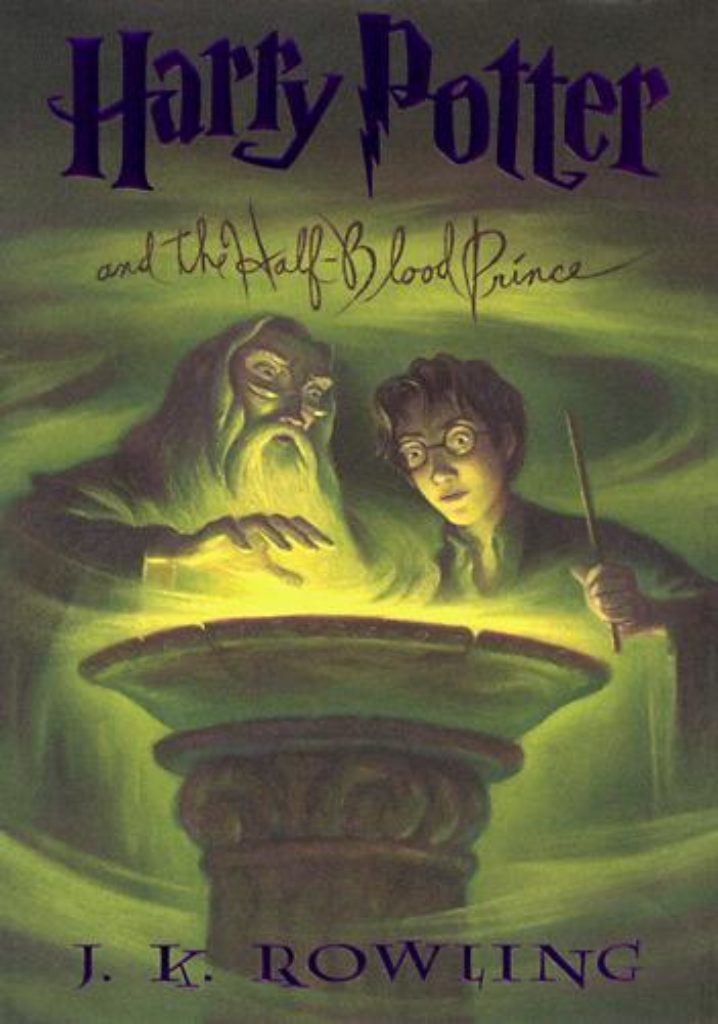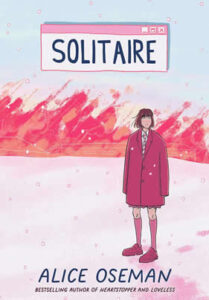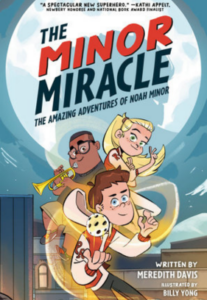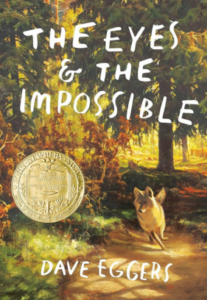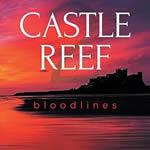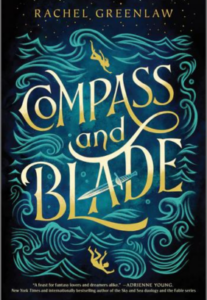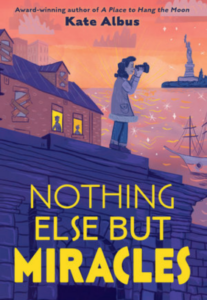As Book VI (of seven) in the Harry Potter series opens, the chaos in the wizarding world has reached a degree such that Muggles are beginning to take notice. People are murdered, unexplainable weather patterns wreak havoc on England and a bridge suddenly collapses, killing dozens.
There’s no denying that evil Lord Voldemort is back with a vengeance. On his to-do list: regain power in the magical world, make certain of his immortality and—oh yes—kill Harry Potter. He has rallied his faithful to him, and he’s beginning to send them out on assignments, knocking off inconvenient opponents, careless of who gets hurt in the process.
Back at Hogwarts for their sixth year, Harry, Ron and Hermione continue to hone their magical skills. They’re no longer required to take a full schedule of classes, but instead get piled high with homework in their areas of specialization. Two interesting developments in Harry’s studies form the crux of the story: he finds a textbook helpfully annotated by a mysterious character called the Half-Blood Prince, and he meets privately with Dumbledore for a series of lessons that will help him understand the prophecy uncovered in Book V and prepare him for the ultimate battle with the Dark Lord that everyone knows awaits him in Book VII.
Harry Potter and the Half-Blood Prince showcases J.K. Rowling’s meticulous plot-planning, harkening back to the earliest books in the series and tying up loose ends that readers have wondered about for years. Equal to her cohesiveness in storytelling is Rowling’s consistency in her use of magic, which continues to disappoint. Christian families may find some consolation in the fact that there are no surprises in Rowling’s Half-Bloodmagic, but they still have every right to be concerned. For in our world—unlike Rowling’s—there is no such thing as a “good” witch or wizard.
Positive Elements
A constant throughout the series has been the idea that selfless love is a power stronger than evil—stronger, in fact, than “any magic.” In Half-Blood, Dumbledore reiterates and expounds upon this truth. Also, real love is contrasted with feelings of being “in love,” as created by a love potion: “[The potion] doesn’t really create love, of course. It is impossible to manufacture or imitate love.” (Unfortunately, though it places a high value on love, this book takes cues from humanism in that it makes it seem as if Harry’s ability to love comes from within himself, forgetting the fact that we humans can only love because God first loved us.)
Dumbledore makes a special effort not only to affirm Harry’s true friendship with Ron and Hermione, but tells him that he will need to rely on them and be honest with them through the course of this difficult year. He also bolsters Harry’s courage by telling him, “It is the unknown we fear when we look upon death and darkness, nothing more.” The influence teachers have upon their students is affirmed numerous times.
Perhaps the most important themes in Half-Blood are those dealing with the nature of good and evil. Dumbledore and those loyal to him represent the good side and are characterized by truly good things. For example, they value truth and respect for others, even those they don’t like. They trust people, not blindly, but with a willingness to give others second (and sometimes third and fourth) chances. They attempt to clear the names of innocent people—even those who are really unpleasant. They dislike poor sportsmanship.
Dumbledore empowers Harry by soliciting and respecting his opinion. He rewards Harry’s hard work and courage by giving him new and bigger responsibilities. Like a good leader should, he gives Harry reason to want to do what he asks. He also acts with courage, refusing to “allow Voldemort to dictate the terms of [a] meeting” between the two wizards (before Voldemort rose to power the first time).
The evil side of the Half-Blood conflict is likewise characterized by qualities and actions that are truly evil. By representing Voldemort and his followers (the Death Eaters) as such, Rowling speaks out against their evil and calls for it to be hated and destroyed. She speaks to the nature of evil people, calling Voldemort’s followers “the weak seeking protection, the ambitious seeking some shared glory and the thuggish gravitating toward a leader who could show them more refined forms of cruelty.” The Dark Lord is manipulative, blackmailing his followers into doing his will under threat of their lives and their families’ lives. He shuns others, believing he needs no one and can rise to ultimate power by depending solely on himself.
The most telling aspect of Voldemort’s character is revealed when Harry learns how his enemy arrived at his current depraved state. He learns that the young Voldemort was told, “The soul is supposed to remain intact and whole. Splitting it is an act of violation. It is against nature.” Also, killing people is “the supreme act of evil” and it “rips the soul apart.” Voldemort chose to violate this instruction and kill deliberately, thus destroying his own soul. As Dumbledore tells Harry, “The transformation [Lord Voldemort] has undergone seemed to me to be only explicable if his soul was mutilated beyond the realms of what we might call ‘usual evil.'”
Harry’s Family
The Dursleys are at last called on the carpet for their prolonged mistreatment of Harry. Dumbledore reminds them, “I left him on your doorstep fifteen years ago, with a letter explaining about his parents’ murder and expressing the hope that you would care for him as if he were your own. … You did not do as I asked. You have never treated Harry as a son. He has known nothing but neglect and often cruelty at your hands. The best that can be said is that he has at least escaped the appalling damage you have inflicted upon [your son Dudley].” By making these statements, Dumbledore delivers a sharp one-two punch, obviously chastising the parents for abusing Harry, but also implying that they have harmed Dudley in an even more lasting manner by spoiling him.
This book gives a great deal of attention to Harry’s grief over the Book-V loss of his godfather, Sirius Black. That grief includes anger, sadness and a sense of loss. But Harry also at times expresses a mature perspective on his grief, recalling, “While I was at the Dursleys [after Sirius died], I realized I can’t shut myself away or—or crack up. Sirius wouldn’t have wanted that, would he? And anyway, life’s too short.”
The idea that a child’s upbringing affects his or her character is affirmed in several ways.
Crude or Profane Language
“Rude hand gestures” and uses of God’s name as a swear word are scattered throughout the story, as are the words “h ” and “d n.” They’re not constant, but get enough play to set a bad example for young readers, especially because the story’s heroes use them as often as anyone else.
Violence and Hatred
An evil wizard tries to throttle his own daughter. The story is told of how Voldemort killed his own parents. Harry uses a new spell and gravely—though unintentionally—injures an opponent, splitting his face and chest open as with a sword. (Harry immediately regrets his rash behavior and is glad when his foe is cured.) It is mentioned that werewolf attacks are increasing as Voldemort gains power. One character is mauled badly by a werewolf during the story’s action. (He survives.)
Harry’s response to Draco Malfoy viciously breaking his nose is hatred (“Harry had never hated Malfoy more than as he lay there, like an absurd turtle on his back, blood dripping sickeningly into his open mouth.”) Later, he feels a similar hatred for Professor Snape, who is looking more and more like a Death Eater all the time.
The book’s final battle is intense, and more than one participant dies.
Teenage Stuff
In the magical world, witches and wizards come of age at 17, so Half-Blood chronicles the year leading up to this event for Harry, Ron and Hermione. As such, Rowling makes numerous observations about the nature of teenagers and their rites of passage. Of note in this book is an increase in teenage romance, with all its petty jealousy. The physical aspect of romance is described in more detail, too. For example, “[They] were locked in a close embrace and kissing fiercely as though glued together.”
Gross-Outs
As Rowling’s characters age, they seem to move beyond the need for bathroom humor and sight gags. With the exception of Fred and George Weasley, of course. Those two jokers make light of the magical world’s obsession with “You Know Who” (Voldemort), by inventing a joke product they call “U-No-Poo: The Constipation Sensation that’s Sweeping the Nation.”
On a more serious note, a new foe Harry encounters is the Inferi, a corpse that has been magically animated by a Dark Wizard to do his will.
Situation Ethics and Worldly Values
As discussed, Rowling gives quite a lot of attention to the battle between good and evil, but she sometimes misses the boat on the nature of good, attributing to her “good” characters questionable values. For instance, Harry and his friends lie to protect Hagrid’s feelings. Hermione jinxes a haughty Quidditch player so that Ron will make the team instead of him. Dumbledore offers gin to an acquaintance so that she’ll get drunk and share extra information with him. Harry similarly extracts information from a drunken professor. Harry is at one point “forced” to lie in order to excuse himself from a nosy crowd of peers. A professor offers Ron a drink to make him feel better. Dumbledore deceives others into thinking he’s in one place when he’s really going elsewhere to investigate a mystery.
Conclusion
The stories are a tad darker and the characters are older, but Book VI is quite consistent with its predecessors, so few families will be changing their minds about what they think about Harry.
That said, I’ll leave it to an illustration from the book to aid the final pronouncement on Harry Potter and the Half-Blood Prince: In discussing with Dumbledore the magical world’s law against underage wizards using magic outside Hogwarts, Harry is surprised to learn that the Ministry of Magic can’t tell who performed magic, only where it was performed. Harry asks, “So, if you’re underage and you do magic inside an adult witch or wizards’ house, the ministry won’t know?” To which Dumbledore responds, “They will certainly be unable to tell who performed the magic. They rely on witch and wizard parents to enforce their offspring’s obedience while within their walls.”
It seems wise, then, for real-world, non-magical parents to prevent the misuse of magic by the young people in their homes too.



